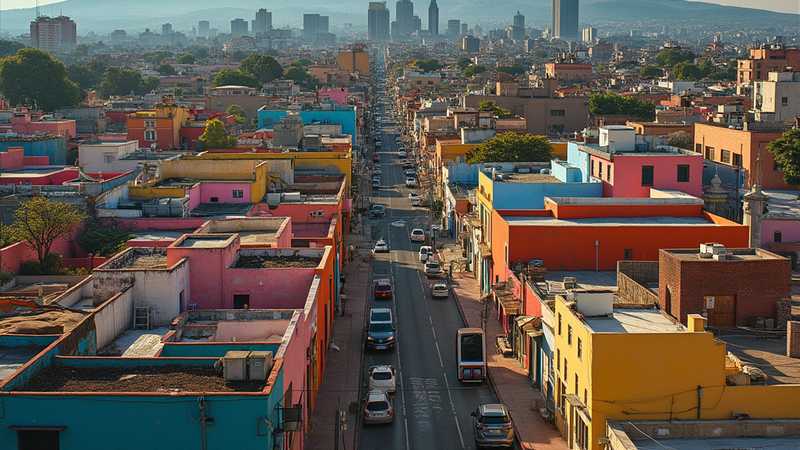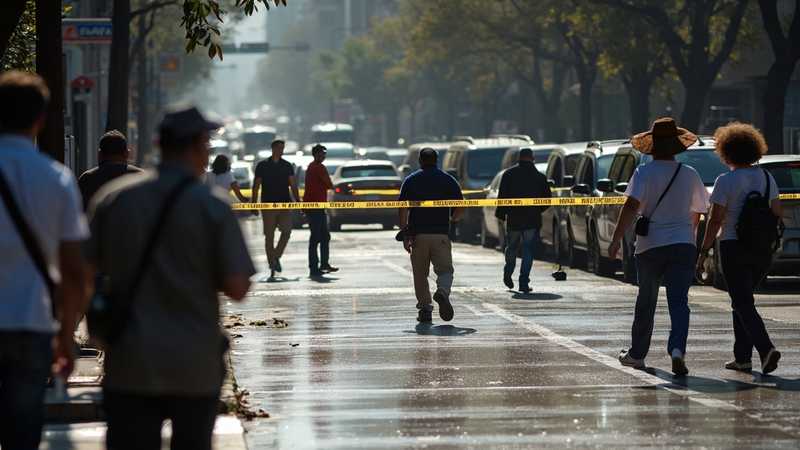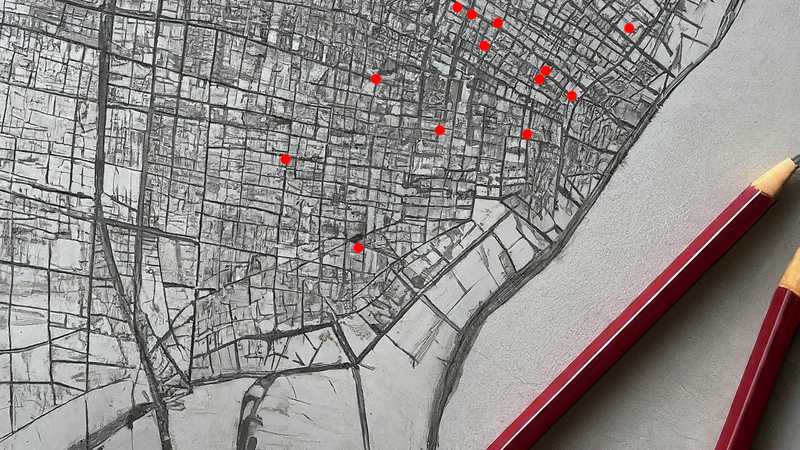Mexico City Crime
Map of homicide rates by neighborhood
⠀⠀⠀⠀⠀⠀⠀⠀ ⠀⠀⠀ ⠀ ⠀⠀⠀⠀⠀⠀⠀⠀ ⠀⠀⠀⠀
fewer homicides
more homicides
What is a smoothed rate?
If we simply graph the homicide rate, we can see many ups and downs, with peaks in certain neighborhoods and valleys in others. These fluctuations can be attributed to random events or normal variations due to the small population of the average neighborhoods. To obtain a clearer view of the overall trend, a statistical method called 'smoothing' is used, which considers the number of homicides in nearby neighborhoods and their population.
Official Crime Data
Mexico City’s open data initiative provides geolocated information on reported crimes, offering a valuable but sometimes incomplete view of public safety. In several cases, obtaining critical data has required filing Freedom of Information (FOIA) requests to compel disclosure from authorities. This website cleans, standardizes, and organizes that data to make it accessible and useful for anyone seeking to understand where and how crime occurs in the city.
- Verified and updated data - We process official crime report information, supplemented when necessary with transparency requests to ensure you have access to the most recent data.
- Interactive crime maps - Visualize where crimes occur in real time, with filters by crime type, borough, and time period.
- Detailed territorial analysis - Understand criminal patterns by neighborhood, zone, and time schedule to make informed decisions about your personal safety.
- Precise georeferenced information - Each crime report is geographically located to offer you a real perspective of the security situation in your area.
Armed with this detailed information, citizens can make informed decisions about their safety, businesses can assess risk factors for their operations, and authorities can strategically allocate resources to combat crime effectively. By pinpointing areas with higher crime rates, residents can take precautions and businesses can implement security measures. Moreover, this data empowers citizens to hold the government accountable by revealing crime hotspots and identifying potential areas of neglect
Interactive maps generated from this data can serve as powerful tools for community engagement, fostering transparency and trust between citizens and authorities.

Annualized Homicide Rate in Mexico City
The annualized homicide rate is a way of estimating how many homicides would occur in a year if the current rate of homicides continued for the entire year. It is calculated by taking the number of homicides that occurred in a given month and multiplying it by 12.
This is a useful statistic for tracking trends in homicide rates over time. For example, if the annualized homicide rate in a city is 20, this means that 20 homicides would occur in the city for every 100,000 people if the current rate continued for the entire year. If the annualized homicide rate then decreases to 10, this means that the city is making progress in reducing its homicide rate.
What is the murder rate in Mexico City?
| Year | Homicide Victims | Population | Rate |
|---|
We only report the homicide rate because reporting the total Mexico City crime rate (the sum of all crimes) can be misleading when trying to understand the true nature and extent of criminal activity in the city. This broad measure includes a wide range of offenses, from minor infractions to serious violent crimes, which can obscure important distinctions and trends. Additionally, many crimes go unreported due to factors such as distrust in law enforcement, fear of retaliation, or the perception that reporting won't lead to meaningful action. This underreporting can significantly skew the crude crime rate, making it an unreliable indicator of the actual crime situation.
Focusing on the murder rate, however, provides a more accurate picture of serious crime in Mexico City. Homicides are more likely to be reported and recorded than other types of crimes, making the data more reliable. Moreover, the murder rate is often considered a key indicator of overall security and societal violence. Nevertheless, even murder statistics should be approached with caution. Issues such as misclassification of deaths, political manipulation of data, and inconsistencies in reporting methods across different regions can still affect the accuracy of these figures. It's crucial to consider multiple sources, look at long-term trends, and be aware of the potential limitations and biases in the data when analyzing crime statistics in Mexico.
Estimates of Mexico City homicide rates at the neighborhood level using statistical techniques
Number of crimes in each of the police blocks that make up Mexico City. Will you lose your iPhone or your life...



